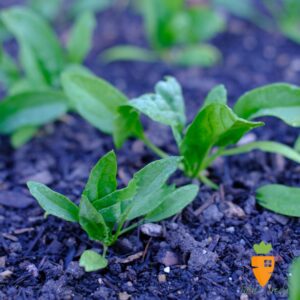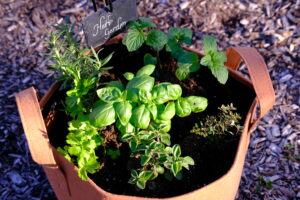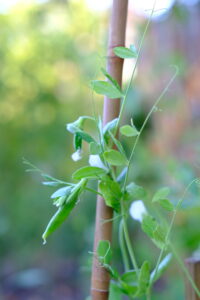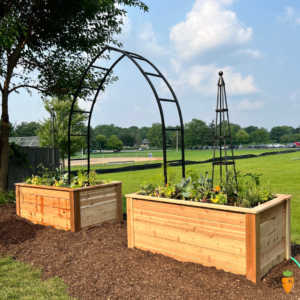There’s nothing like stepping out into your garden on a warm summer morning with a cup of coffee and admiring your beautiful garden. You glance over your veggies and herbs to see what you might be able to harvest for your morning smoothie or lunch salad. And then you notice a shiny spot on a leaf. Or a leaf full of holes.
 Where Did They Come From?
Where Did They Come From?
Japanese beetles are an invasive species, so take no mercy in eradicating them from your garden. They arrived in the US about a hundred years ago from Japan and have slowly spread from the East Coast to the Midwest. In the spring, Japanese beetles start as white grubs in the soil. So if you come across any grubs in the spring, squish them.
In the Chicago area, Japanese beetles normally appear just after the 4th of July. They like to eat certain veggies more than others, but eat hundreds of different types of leaves. In my garden, I can often find Japanese beetles on my bush beans and raspberry bushes. They also seem to like the native grasses I have near my fire pit on the other side of my backyard. The beetles generally disappear for the season at the end of August.
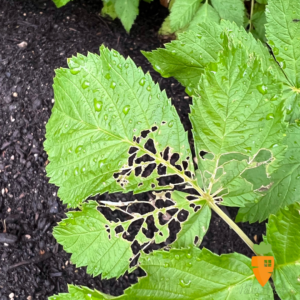 What Can I Do To Get Rid of Them?
What Can I Do To Get Rid of Them?
My favorite method is flicking the beetles off leaves into a cup of water with dish soap. When you’re dealing with pests and diseases around your vegetables and herbs, it’s important to use non-chemical options as much as possible. Soapy water is about the least invasive measure you can use.
Japanese beetles are more sluggish when it’s cool in the morning and evening, so that’s when it will be the easiest to bring about their demise.
It’s also important to know that when Japanese beetles eat leaves, they leave an oder behind on the leaf that encourages other Japanese beetles to swarm. Removing leaves with Japanese beetle holes in them will help keep them away from your garden.
Most importantly, don’t stress out about Japanese beetle damage or let the damage stress you out. The damage that Japanese beetles cause is purely cosmetic. As long as the plant still has enough leaves to properly photosynthesize, your garden is fine and will keep growing.


